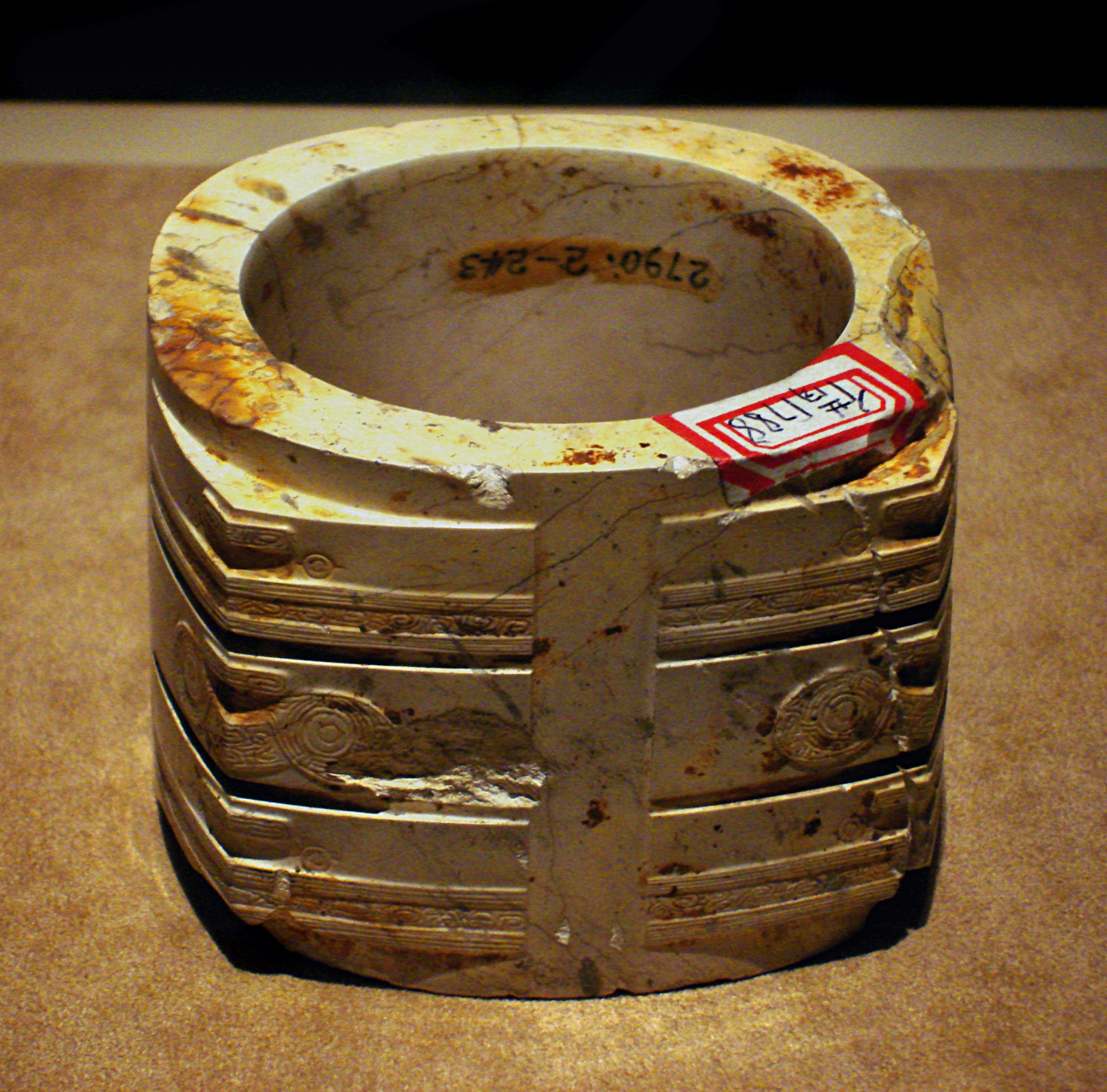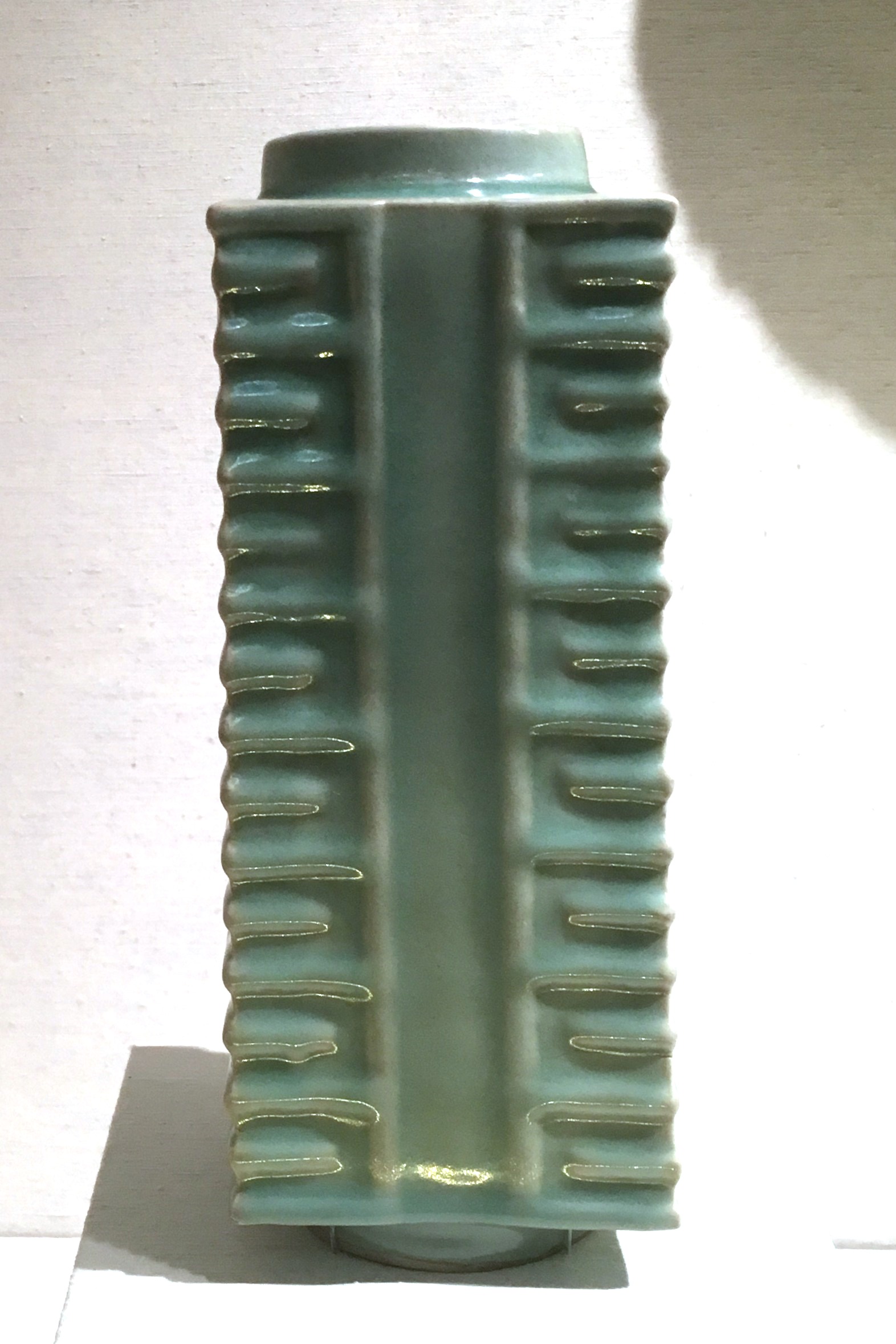Cong (jade) on:
[Wikipedia]
[Google]
[Amazon]

 A ''cong'' () is a form of ancient
A ''cong'' () is a form of ancient

Chinese jade
Chinese jade refers to the jade mined or carved in China from the Neolithic onward. It is the primary hardstone of Chinese sculpture. Although deep and bright green jadeite is better known in Europe, for most of China's history, jade has com ...
artifact. It was later also used in ceramics.
History
The earliest ''cong'' were produced by theLiangzhu culture
The Liangzhu culture (; 3300–2300 BC) was the last Neolithic jade culture in the Yangtze River Delta of China. The culture was highly stratified, as jade, silk, ivory and lacquer artifacts were found exclusively in elite burials, while pottery ...
( 3400-2250 BC
The 23rd century BC was a century that lasted from the year 2300 BC to 2201 BC.
Events
* 2334 BC – 2279 BC: (short chronology) Sargon of Akkad's conquest of Mesopotamia.
*c. 2300 BC: Indus Valley civilisation (Harappan) flourishing in mode ...
); later examples date mainly from the Shang
The Shang dynasty (), also known as the Yin dynasty (), was a Chinese royal dynasty founded by Tang of Shang (Cheng Tang) that ruled in the Yellow River valley in the second millennium BC, traditionally succeeding the Xia dynasty and ...
and Zhou dynasties.
Interest in the jade shape developed during the 12th-13th century Song dynasty
The Song dynasty (; ; 960–1279) was an imperial dynasty of China that began in 960 and lasted until 1279. The dynasty was founded by Emperor Taizu of Song following his usurpation of the throne of the Later Zhou. The Song conquered the res ...
. The shape continued to be used in ceramic and metalwork for centuries. BBC TV documentary: ''China in Six Easy Pieces'' (2013) presented by Lars Tharp
Lars Broholm Tharp (born 27 March 1954, Copenhagen, Denmark)THARP, Lars Broholm
, '' ...
http://www.bbc.co.uk/programmes/b036r5cx
, '' ...
Description
A ''cong'' is a straight tube with a circular bore and square outer section with more or less convex sides. The outer surface is divided vertically or horizontally such that the whole defines a hollow cylinder embedded in a partial rectangular block. Proportions vary: a ''cong'' may be squat or taller than it is wide. The outer faces are sometimes decorated with mask-like faces, which may be related to the ''taotie
The ''Taotie'' () is an ancient Chinese mythological creature that was commonly emblazoned on bronze and other artifacts during the 1st millennium BC. ''Taotie'' are one of the " four evil creatures of the world". In Chinese classical texts such a ...
'' designs found on later bronze vessels.
Although it is generally considered to be a ritual object of some sort, the original function and meaning of the ''cong'' are unknown. Later writings speak of the ''cong'' as symbolizing the earth, while the '' bi'' represents the heavens. The square represents the earth and a circle represents the heavens.
Further reading
*''Les jades néolithiques chinois'' / ontributions de Christophe Comentale, Laurent Long, Tong Peihua, Zhang Jingguo our l'ACI Du chopper au brilliant aris: Museum national d'histoire naturelle, cop. 2008, 1 vol. (81 p.) : ill., couv. ill.; 30 cm *''Art et archéologie : la Chine du Néolithique à la fin des Cinq Dynasties, 960 de notre ère'' / Danielle Elisseeff; Paris : École du Louvre : RMN, 2008 *"Neolithic Chinese Jades", Angus Forsyth, in ''Jade''. Ed. Roger Keverne. New York: Van Nostrand Reinhold, 1991. pp. 88–109.References
External links
*http://www.asia.si.edu/explore/china/jades/gallery.asp#cong *http://www.metmuseum.org/art/collection/search/72376 *https://www.britishmuseum.org/visiting/galleries/asia/room_33b_chinese_jade.aspx Archaeological artifacts of China Archaeological artefact types Chinese porcelain Chinese pottery Hardstone carving Pottery shapes Jade {{china-stub